#rogue planets
Explore tagged Tumblr posts
Text
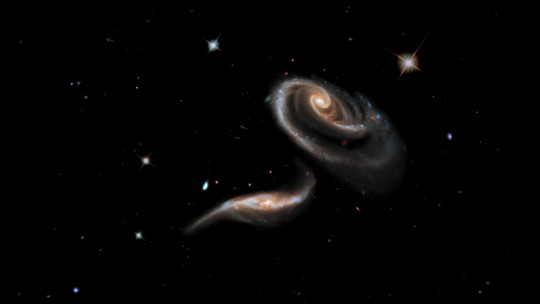
Love Letters from Space
Love is in the air, and it’s out in space too! The universe is full of amazing chemistry, cosmic couples held together by gravitational attraction, and stars pulsing like beating hearts.
Celestial objects send out messages we can detect if we know how to listen for them. Our upcoming Nancy Grace Roman Space Telescope will help us scour the skies for all kinds of star-crossed signals.
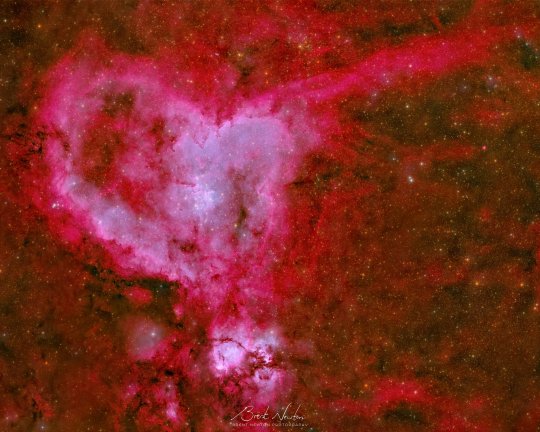
Celestial Conversation Hearts
Communication is key for any relationship – including our relationship with space. Different telescopes are tuned to pick up different messages from across the universe, and combining them helps us learn even more. Roman is designed to see some visible light – the type of light our eyes can see, featured in the photo above from a ground-based telescope – in addition to longer wavelengths, called infrared. That will help us peer through clouds of dust and across immense stretches of space.
Other telescopes can see different types of light, and some detectors can even help us study cosmic rays, ghostly neutrinos, and ripples in space called gravitational waves.
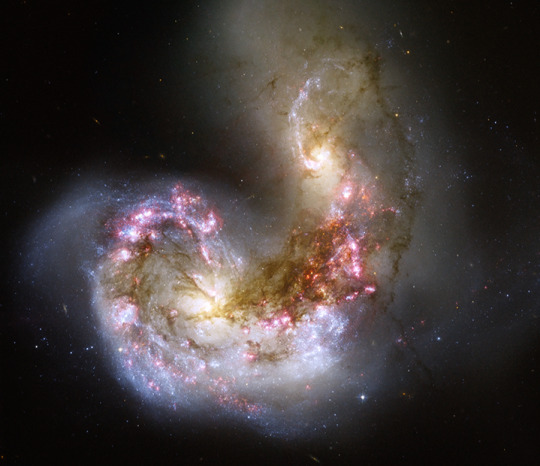
Intergalactic Hugs
This visible and near-infrared image from the Hubble Space Telescope captures two hearts locked in a cosmic embrace. Known as the Antennae Galaxies, this pair’s love burns bright. The two spiral galaxies are merging together, igniting the birth of brand new baby stars.
Stellar nurseries are often very dusty places, which can make it hard to tell what’s going on. But since Roman can peer through dust, it will help us see stars in their infancy. And Roman’s large view of space coupled with its sharp, deep imaging will help us study how galaxy mergers have evolved since the early universe.
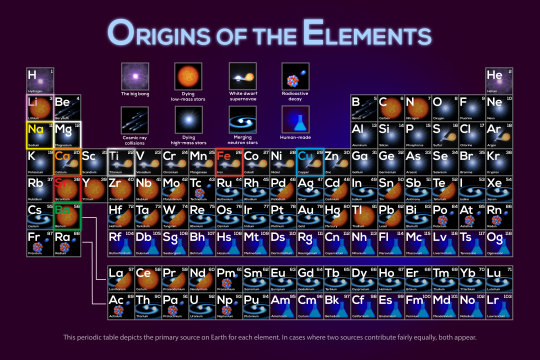
Cosmic Chemistry
Those stars are destined to create new chemistry, forging elements and scattering them into space as they live, die, and merge together. Roman will help us understand the cosmic era when stars first began forming. The mission will help scientists learn more about how elements were created and distributed throughout galaxies.
Did you know that U and I (uranium and iodine) were both made from merging neutron stars? Speaking of which…

Fatal Attraction
When two neutron stars come together in a marriage of sorts, it creates some spectacular fireworks! While they start out as stellar sweethearts, these and some other types of cosmic couples are fated for devastating breakups.
When a white dwarf – the leftover core from a Sun-like star that ran out of fuel – steals material from its companion, it can throw everything off balance and lead to a cataclysmic explosion. Studying these outbursts, called type Ia supernovae, led to the discovery that the expansion of the universe is speeding up. Roman will scan the skies for these exploding stars to help us figure out what’s causing the expansion to accelerate – a mystery known as dark energy.
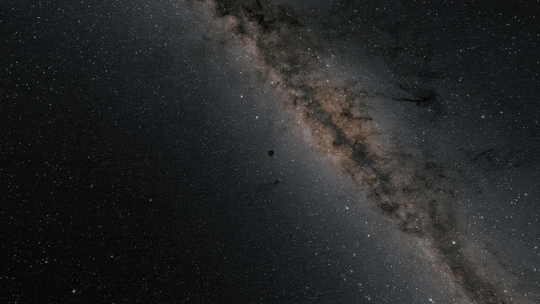
Going Solo
Plenty of things in our galaxy are single, including hundreds of millions of stellar-mass black holes and trillions of “rogue” planets. These objects are effectively invisible – dark objects lost in the inky void of space – but Roman will see them thanks to wrinkles in space-time.
Anything with mass warps the fabric of space-time. So when an intervening object nearly aligns with a background star from our vantage point, light from the star curves as it travels through the warped space-time around the nearer object. The object acts like a natural lens, focusing and amplifying the background star’s light.
Thanks to this observational effect, which makes stars appear to temporarily pulse brighter, Roman will reveal all kinds of things we’d never be able to see otherwise.
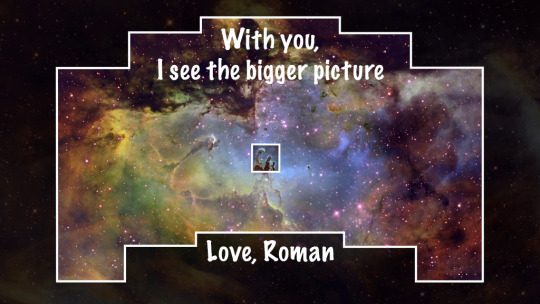
Roman is nearly ready to set its sights on so many celestial spectacles. Follow along with the mission’s build progress in this interactive virtual tour of the observatory, and check out these space-themed Valentine’s Day cards.
Make sure to follow us on Tumblr for your regular dose of space!
#NASA#astronomy#telescope#Roman Space Telescope#Valentine’s Day#space#science#STEM#nebula#chemistry#galaxies#black holes#rogue planets#exoplanets#Hubble Space Telescope#tech
3K notes
·
View notes
Text
Rogue Planets
Salaam loves! Check out a new poem series about love and space; 'Rogue Planets' on my website or insta.
Rogue Planets
or
https://www.instagram.com/p/CzVcXRoiQ9_/?utm_source=ig_web_copy_link&igsh=MzRlODBiNWFlZA==
My tag list is out of this world :
@jayrealgf @think-through-pen @unforgettable-sensations @jordynhaiku @sweetwarmcookies16 @grimfox @mk-ranz
#new poem series#Rogue Planets#Poems about love and space#check it out if you want#poetry#poem#writing#literature#poems#poems on tumblr#poet#poetic#poets on tumblr#love#love and space#Instagram
10 notes
·
View notes
Text
all the stars in the universe
yet rogue planets can’t call one home
drifting through the cold abyss
cruelly cursed to roam
1 note
·
View note
Text
Most of the planets in the Universe orbit a star. They are part of a system of planets, similar to our own solar system. But a few planets drift alone in the cosmos. For whatever reason, be it a near collision or slow gravitational perturbations that destabilize its orbit, these planets are cast out of their star system and sent adrift. These rogue planets are notoriously challenging to find, but as we start to discover them we’re finding they are a bit more common than we’d thought. Now a new study posits a reason why. What they found was that while in single-star systems planets need to be closely spaced to create a rogue planet, in binary systems planets can be widely spaced and still generate rogues. The combination of gravitational tugs from both the stars and other planets is sufficient to destabilize the orbits of some planets. In general, the largest planet of the system remains stable and can destabilize the orbits of smaller planets. Based on their simulations, if the two stars have a circular orbit, then the presence of a Neptune-sized world is enough to generate rogue worlds. If the binary stars orbit each other in an elliptical orbit, then the presence of a super-Earth is enough to generate rogue planets.
0 notes
Text


Finished Rogue Planet and my favorite part is in the first chapter where we get a glimpse of Anakin’s early life in the Temple.
He’s building droids no one wants, sneaking out to race, and making Obi-Wan run around Coruscant after him. Meanwhile, Masters are looking on fondly, saying things like, “He will bring you wisdom!”
147 notes
·
View notes
Text
A very peculiar exoplanet. I am reminded of comets - particularly of the orbits of Oort Cloud comets, which have negligible velocity before they are dislodged and fall sunwards. Thus, they have no preferred direction, in addition to having highly eccentric, near-parabolic orbits. Perhaps this exo-Jupiter was also dislodged from an Oort-like orbit. Possibly it could also be a rogue planet, captured from interstellar space.
One interesting clue would be the tilt of its orbit from the plane of the rest of its solar system. Even if it’s orbit falls into that same plane, a backwards ellipse could be considered a tilt of 180 degrees. I cannot imagine such a tilt arising without a past perturbation event.
Another question: Would such an eccentric orbit tend to circularize with time, perhaps through the influence of other planets, or tidal effects from the star?

Exoplanet caught in ‘hairpin turn’ signals how high-mass gas giants form
An exoplanet’s elongated, backwards orbit holds clues to the formation history and future trajectories of hot Jupiters
Astronomers have discovered a planet that has the most oblong orbit ever found among transiting planets. The exoplanet’s extreme circuit — which looks closer to a cucumber than a circle — follows one of the most drastically stretched-out orbits of all known exoplanets, planets that orbit stars outside our solar system. It is also orbiting its star backwards, lending insight into the mystery of how close-in massive gas planets, known as hot Jupiters, form, stabilize and evolve over time.
The research, led by Penn State scientists, was published today (July 17) in the journal Nature.
“We caught this massive planet making a sharp, hairpin turn during its close passage to its star,” said Suvrath Mahadevan, the Verne M. Willaman Professor of Astronomy at Penn State and author on the paper. “Such highly eccentric transiting planets are incredibly rare — and it's really amazing that we were able to discover the most eccentric one.”
Mahadevan explained that the term “eccentric” refers to the shape of a planet’s orbit, which is measured on a scale from zero to one, with zero being a perfectly circular orbit. This exoplanet, named TIC 241249530, has an orbital eccentricity of 0.94, making it more eccentric than the orbit of any other transiting exoplanet ever found. For comparison, Pluto’s highly elliptical orbit around the sun has an eccentricity of 0.25; Earth’s eccentricity is 0.02. Such an extreme orbit, Mahadevan explained, would cause temperatures on the planet to vary between that of a summer’s day at the farthest point in its orbit to blazing hot at its closest approach.
To add to the unusual nature of the exoplanet’s orbit, the team also found that it’s orbiting backwards, meaning in a direction opposite to the rotation of its host star. This is not something that astronomers see in most other exoplanets, nor in our own solar system, and it helps inform the team’s interpretation of the exoplanet’s formation history.
“While we can’t exactly press rewind and watch the process of planetary migration in real time, this exoplanet serves as a sort of snapshot of the migration process,” Arvind Gupta, NOIRLab postdoctoral researcher and lead author of the paper, who conducted the research as a doctoral student at Penn State, said in a NOIRLab release. “Planets like this are hard to find and we hope it can help us unravel the hot Jupiter formation story.”
At present there are over 5,600 confirmed exoplanets in just over 4,000 star systems. Within this population, about 300 to 500 exoplanets fall into the curious class known as hot Jupiters — large, Jupiter-like exoplanets that orbit very close to their star, much closer than Mercury is to our sun. How hot Jupiters end up in such close orbits is a mystery, but astronomers suspect that they begin in orbits far from their star and then migrate inward over time. The early stages of this process have rarely been observed, but with this new analysis of an exoplanet with an unusual orbit, astronomers are one step closer to unraveling the hot Jupiter mystery.
“Astronomers have been searching for exoplanets that are likely precursors to hot Jupiters, or that are intermediate products of the migration process, for more than two decades, so I was very surprised — and excited — to find one,” Gupta said.
The discovery and characterization of the exoplanet was enabled by three instruments built at Penn State: the NASA-funded NEID spectrograph, the Habitable Zone Planet Finder spectrograph and a photometric diffuser. All three instruments allow researchers to observe and analyze light emitted by the exoplanet.
The researchers first detected the planet using NASA’s Transiting Exoplanet Survey Satellite (TESS) in January 2020, which revealed a dip in a star’s brightness consistent with a single Jupiter-sized planet passing in front of the star. To confirm the nature of these fluctuations and eliminate other possible causes, a team of astronomers used two instruments on the WIYN 3.5-meter Telescope at the U.S. National Science Foundation (NSF) Kitt Peak National Observatory (KPNO), a program of NSF NOIRLab.
The team first utilized the NASA-funded NN-EXPLORE Exoplanet and Stellar Speckle Imager (NESSI) in a technique that helps to “freeze out” atmospheric twinkling, which showed that there were no extraneous stars nearby that could have confused the TESS measurements. Then, using the HPF and NEID spectrographs, the team observed how TIC 241249530’s spectrum, or wavelengths of its emitted light, shifted as a result of the exoplanet orbiting it.
“It's so exciting to see such great science coming out of NEID within just a few years of operations,” said Andrea Lin, a co-author on the paper and doctoral student at Penn State who helped construct and commission the NEID spectrograph. “We’re just getting started and I'm looking forward to seeing what we can accomplish in the future.”
Detailed analysis of how the velocity of the star changes throughout the planet’s six-month orbital period confirmed that the exoplanet is approximately five times more massive than Jupiter, and that it is orbiting along an extremely eccentric path.
“This is the most eccentric transiting planet known and will prove to be as important as the previous record holder, HD80606b, which likewise has a wacky orbit highly misaligned with its host star's spin,” said Jason Wright, Penn State professor of astronomy and astrophysics, who supervised the project while Gupta was a doctoral student at the university. “These two highly eccentric planets have been ‘caught in the act’ of evolving towards hot Jupiter status. Like HD80606b, this planet is many times Jupiter's mass, suggesting this channel for forming hot Jupiters might be one only the most massive planets can take.”
Together, these two examples observationally affirm the idea that higher-mass gas giants evolve to become hot Jupiters as they migrate from highly eccentric orbits toward tighter, more circular orbits.
"We’re especially interested in what we can learn about the dynamics of this planet's atmosphere after it makes one of its scorchingly close passages to its star," Wright said. "Telescopes like NASA's James Webb Space Telescope have the sensitivity to probe the changes in the atmosphere of this newly discovered exoplanet as it undergoes rapid heating, so there is still much more for the team to learn about the exoplanet."
Other Penn State co-authors are Jessica Libby-Roberts, a postdoctoral fellow, Megan Delamer, a graduate student, and Donald Schneider, distinguished professor of astronomy and astrophysics. A full list of authors is available on the paper.
IMAGE: A team of astronomers led by Penn State scientists have discovered a planet that has the most oblong orbit ever found among transiting planets. The exoplanet’s extreme circuit — which looks closer to a cucumber than a circle — follows one of the most drastically stretched-out orbits of all known exoplanets, planets that orbit stars outside our solar system. The planet, , named TIC 241249530, is also orbiting its star backwards, lending insight into the mystery of how close-in massive gas planets, known as hot Jupiters, form, stabilize and evolve over time. Credit Abigail Minnich/Penn State
2 notes
·
View notes
Text
One of my favourite scenes, if not the favourite (since the frostbite scene is a deleted one). Malcolm and Hoshi join forces to wind up Trip during Rogue Planet. All it takes is a look, and innate understanding of the other's Little Shit™ energy.
Hell, Malcolm doesn't even have to look at Hoshi for her to know exactly what he's up to and have to swallow her smile!
Poor Trip! That expressive face and its several stages of apprehension, disbelief, and horror!
#star trek enterprise#malcolm reed#hoshi sato#trip tucker#rogue planet#Little Shit™ energy#these two are mischievous as all get out#Malcolm a stick-in-the-mud? This guy?
117 notes
·
View notes
Text






aes' main games of 2024
#dragon age#misc games#too many to tag but we shall try#dragon age: the veilguard#videogameedit#vgedit#gamingedit#gameedit#edits24#mygif#veilguard spoilers#dailygaming#minecraft#pathfinder#rogue trader#fallout#coral island#stardew valley#7 days to die#planet zoo#fable#astroneer#long post#tw: flashing gif#utopianoverlord
145 notes
·
View notes
Text

Sheila tried a Black Hole Angel costume, but it got dirty quickly because it attracted dust, crumbs, and in one instance a rogue planet that got too close.
122 notes
·
View notes
Text

A simulated image of NASA’s Nancy Grace Roman Space Telescope’s future observations toward the center of our galaxy, spanning less than 1 percent of the total area of Roman’s Galactic Bulge Time-Domain Survey. The simulated stars were drawn from the Besançon Galactic Model.
Exploring the Changing Universe with the Roman Space Telescope
The view from your backyard might paint the universe as an unchanging realm, where only twinkling stars and nearby objects, like satellites and meteors, stray from the apparent constancy. But stargazing through NASA’s upcoming Nancy Grace Roman Space Telescope will offer a front row seat to a dazzling display of cosmic fireworks sparkling across the sky.
Roman will view extremely faint infrared light, which has longer wavelengths than our eyes can see. Two of the mission’s core observing programs will monitor specific patches of the sky. Stitching the results together like stop-motion animation will create movies that reveal changing objects and fleeting events that would otherwise be hidden from our view.
youtube
Watch this video to learn about time-domain astronomy and how time will be a key element in NASA’s Nancy Grace Roman Space Telescope’s galactic bulge survey. Credit: NASA’s Goddard Space Flight Center
This type of science, called time-domain astronomy, is difficult for telescopes that have smaller views of space. Roman’s large field of view will help us see huge swaths of the universe. Instead of always looking at specific things and events astronomers have already identified, Roman will be able to repeatedly observe large areas of the sky to catch phenomena scientists can't predict. Then astronomers can find things no one knew were there!
One of Roman’s main surveys, the Galactic Bulge Time-Domain Survey, will monitor hundreds of millions of stars toward the center of our Milky Way galaxy. Astronomers will see many of the stars appear to flash or flicker over time.
youtube
This animation illustrates the concept of gravitational microlensing. When one star in the sky appears to pass nearly in front of another, the light rays of the background source star are bent due to the warped space-time around the foreground star. The closer star is then a virtual magnifying glass, amplifying the brightness of the background source star, so we refer to the foreground star as the lens star. If the lens star harbors a planetary system, then those planets can also act as lenses, each one producing a short change in the brightness of the source. Thus, we discover the presence of each exoplanet, and measure its mass and how far it is from its star. Credit: NASA's Goddard Space Flight Center Conceptual Image Lab
That can happen when something like a star or planet moves in front of a background star from our point of view. Because anything with mass warps the fabric of space-time, light from the distant star bends around the nearer object as it passes by. That makes the nearer object act as a natural magnifying glass, creating a temporary spike in the brightness of the background star’s light. That signal lets astronomers know there’s an intervening object, even if they can’t see it directly.
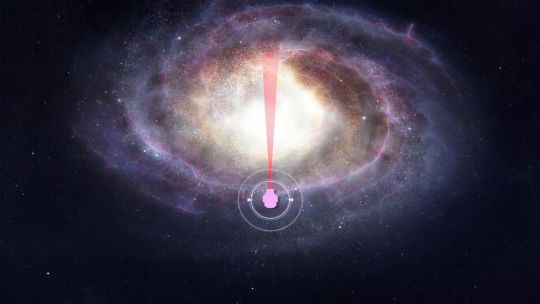
This artist’s concept shows the region of the Milky Way NASA’s Nancy Grace Roman Space Telescope’s Galactic Bulge Time-Domain Survey will cover – relatively uncharted territory when it comes to planet-finding. That’s important because the way planets form and evolve may be different depending on where in the galaxy they’re located. Our solar system is situated near the outskirts of the Milky Way, about halfway out on one of the galaxy’s spiral arms. A recent Kepler Space Telescope study showed that stars on the fringes of the Milky Way possess fewer of the most common planet types that have been detected so far. Roman will search in the opposite direction, toward the center of the galaxy, and could find differences in that galactic neighborhood, too.
Using this method, called microlensing, Roman will likely set a new record for the farthest-known exoplanet. That would offer a glimpse of a different galactic neighborhood that could be home to worlds quite unlike the more than 5,500 that are currently known. Roman’s microlensing observations will also find starless planets, black holes, neutron stars, and more!
youtube
This animation shows a planet crossing in front of, or transiting, its host star and the corresponding light curve astronomers would see. Using this technique, scientists anticipate NASA’s Nancy Grace Roman Space Telescope could find 100,000 new worlds. Credit: NASA’s Goddard Space Flight Center/Chris Smith (USRA/GESTAR)
Stars Roman sees may also appear to flicker when a planet crosses in front of, or transits, its host star as it orbits. Roman could find 100,000 planets this way! Small icy objects that haunt the outskirts of our own solar system, known as Kuiper belt objects, may occasionally pass in front of faraway stars Roman sees, too. Astronomers will be able to see how much water the Kuiper belt objects have because the ice absorbs specific wavelengths of infrared light, providing a “fingerprint” of its presence. This will give us a window into our solar system’s early days.
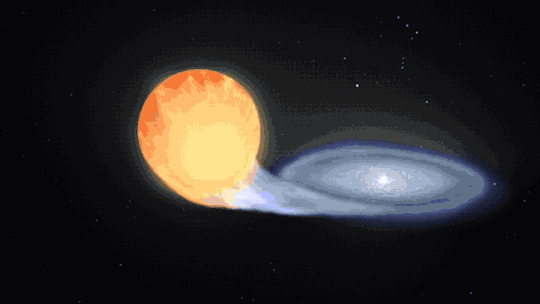
This animation visualizes a type Ia supernova.
Roman’s High Latitude Time-Domain Survey will look beyond our galaxy to hunt for type Ia supernovas. These exploding stars originate from some binary star systems that contain at least one white dwarf – the small, hot core remnant of a Sun-like star. In some cases, the dwarf may siphon material from its companion. This triggers a runaway reaction that ultimately detonates the thief once it reaches a specific point where it has gained so much mass that it becomes unstable.
youtube
NASA’s upcoming Nancy Grace Roman Space Telescope will see thousands of exploding stars called supernovae across vast stretches of time and space. Using these observations, astronomers aim to shine a light on several cosmic mysteries, providing a window onto the universe’s distant past. Credit: NASA’s Goddard Space Flight Center
Since these rare explosions each peak at a similar, known intrinsic brightness, astronomers can use them to determine how far away they are by simply measuring how bright they appear. Astronomers will use Roman to study the light of these supernovas to find out how quickly they appear to be moving away from us.
By comparing how fast they’re receding at different distances, scientists can trace cosmic expansion over time. This will help us understand whether and how dark energy – the unexplained pressure thought to speed up the universe’s expansion – has changed throughout the history of the universe.
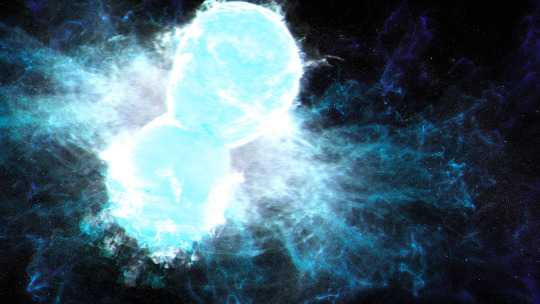
NASA’s Nancy Grace Roman Space Telescope will survey the same areas of the sky every few days. Researchers will mine this data to identify kilonovas – explosions that happen when two neutron stars or a neutron star and a black hole collide and merge. When these collisions happen, a fraction of the resulting debris is ejected as jets, which move near the speed of light. The remaining debris produces hot, glowing, neutron-rich clouds that forge heavy elements, like gold and platinum. Roman’s extensive data will help astronomers better identify how often these events occur, how much energy they give off, and how near or far they are.
And since this survey will repeatedly observe the same large vista of space, scientists will also see sporadic events like neutron stars colliding and stars being swept into black holes. Roman could even find new types of objects and events that astronomers have never seen before!
Learn more about the exciting science Roman will investigate on X and Facebook.
Make sure to follow us on Tumblr for your regular dose of space!
#NASA#astronomy#telescope#Roman Space Telescope#dark energy#galaxies#cosmology#astrophysics#stars#galaxy#space images#time#supernova#Nancy Grace Roman#black holes#neutron stars#kilonova#rogue planets#exoplanets#space#science#tech#technology#Youtube
3K notes
·
View notes
Text
Obsessed with how rogue planet introduces us to anakin and obi-wan, three years post phantom menace and I think this blurb describes both their dynamic and mentality very well

159 notes
·
View notes
Text
S.P

11 notes
·
View notes
Text
Alright, I think Ana and Heinrix end up developing a relationship that’s certainly healthy by 40K standards but still a bit codependent.
Ana grew up on a planet where mutants were generally viewed a bit more forgivingly than in other parts of the Imperium (though not by much they’re still treated as second class citizens at best. This cultural post will come eventually and soon I promise) so she doesn’t have quite the same level of Catholic angst about being a psyker as Heinrix does, that being said it has certainly left its mark (thinks a lot about the in game Inscribed Soul ability and about how you literally have to take damage to use it).
Heinrix by contrast, grew up on the sort of planet where mutants were undoubtedly as discriminated against as in any other part of the Imperium if not worse thanks to events in the distant past at the end of the Dark Age of Technology and Old Night. He would have had the notion practically beaten into his head that psykers were fundamentally inferior, dangerous and evil and once he developed psychic abilities himself he became that in his mind. Combine that with the Imperium’s general attitude towards psykers, being in the Inquisition and so on and it’s no wonder he sort of attaches himself emotionally to the first pretty woman (or handsome guy if you use mods) in power who shows positive attention.
Neither of them have had a long term relationship before, they both have awful views about human supremacy by virtue of their respective Imperial upbringings, and they’re both war criminals but by the God-Emperor they’re going to try and make it work.
#as I saw someone else put it#hi my wife is here to conquer your planet and steal your resources#hi my husband is going to torture you now#they’re both still quite evil by our real life standards but as far as their relationship goes they try to make it work out#bless them#my precious little war criminals#rogue trader crpg#oc: Anastasia Von Valancius#heinrix van calox#I hadn’t set out to make Ana a foil for Heinrix#but you know what I kinda like it#this was a messy post geeze#congratulations-you-are-being-rescued-please-do-not-resist-ah couple
23 notes
·
View notes
Text


HOUSE VAHL AF CALIXIS; Excerpt from A Brief History of the Calixis Sector, Volume XCIV by Historiographer Ignatius d'Angelus
#presented with the caveat that livea is a bastard so... it is not accurate#wh40k#rogue trader#oc: livea von valancius#planets of the calixis sector: korvos iv#oc stuff#edits#what is oc lore for if not retconning it yourself over a year later
20 notes
·
View notes
Text

Rogue Trader Wynnrun, under the protection of the Red Beast, her planet's deity.
The people of Alemannis believe the red, fiery trail that follows the God-Emperor to be the fire of humanity's soul itself, manifested as a powerful beast that cuts through the skies, brings life and light to the planets and destruction to it's enemies. This faith has carried the people around House Alema to a planet that overflows with life, inhabiting Raptors which House Alema deemed as signs of the Beast. When the first rare sightings of the bright red feathered kind of said Raptors occured, the people of Alemannis rejoiced, for they believed that their home is inhabited by the manifestations of the Red Beast itself. Since then, House Alema and it's people, the Alemans, have tasked themselves to protect and care for their home and it's holy wildlife for many centuries to come. Spotting the rare signs of a Red Raptor, be it even just the smallest feather, is a sign of great fortune. As such having the chance to see one of these especially elusive creatures face to face is a sign of destiny.
And Wynnrun, who has seen them twice, is rumored to be destined for greatness, possibly sparking the liberation of Alemannis people from the increasingly rapacious and oppressive gaze of the Imperium.
#rogue trader#warhammer 40k#original art#digital art#m n c art#oc wynnrun#just making my own planet and faith in 40k; thinking “how can I include dinosaurs into this” haha
44 notes
·
View notes
Text
“Anakin suddenly jumped out of his chair and hugged his master with a fierceness that took Obi-Wan by surprise. Obi-Wan held the boy gently, and let the moment flow into its own shape. Some padawans were as simple as quiet pools. Only in training did they aquire the depth and complexity that showed maturity. Anakin had been a deep and complex mystery from the first day they had met. And yet, Obi-Wan had never felt such a strength of connection with any other being – not even Qui-Gon Jinn.”
- Greg Bear, Star Wars: Rogue Planet
#Star Wars#Obi wan kenobi#anakin skywalker#rogue planet#Star Wars: rogue planet#sw novels#sw books#anakin and obi wan
301 notes
·
View notes